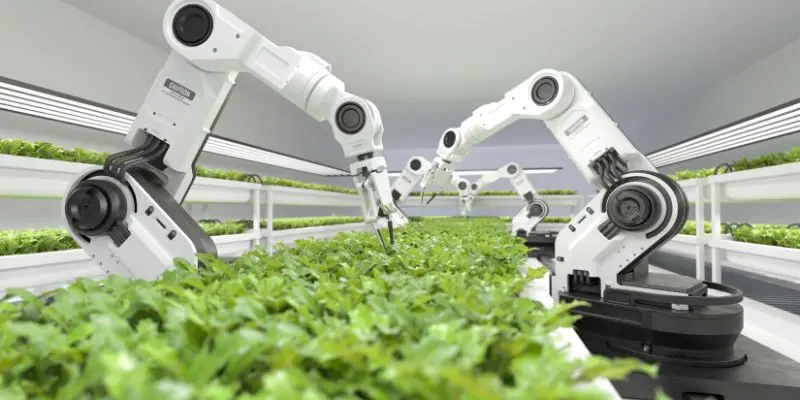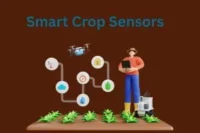Farm Automation Using Robotics: Cultivating the Future, One Machine at a Time
Published: 1 May 2025
At first glance, the idea seems almost strange—robots in a field? Machines replacing hands that have worked the soil for generations? For many, the thought of automation in farming feels cold, mechanical, even a little unsettling. Isn’t farming supposed to be human, earthy, hands-on? And yet, across the world, these machines are quietly proving themselves—not by replacing the farmer, but by helping them stay. In a time when agriculture is battling rising costs, labor shortages, and climate uncertainty, farm robotics may not be a threat to tradition—but a tool to protect it.
So, guys, without wasting time, let’s jump into the article to learn
What is Farm Automation Using Robotics?
- Farm automation involves using robotic systems to carry out routine, repetitive, and labor-intensive agricultural tasks.
- These machines are powered by artificial intelligence, sensors, GPS, and sometimes solar energy.
- Examples include:
- Autonomous tractors and planters
- Drones for monitoring and spraying
- Robotic weeders
- Fruit-picking machines
- Soil and weather sensors connected to smart systems

The Emotional Reason Behind the Technology
- Farmers face increasing stress:
- Difficulty hiring skilled labor
- Rising input costs
- Physically exhausting, repetitive tasks
- Pressure to produce more with fewer resources
- Automation is not about eliminating farmers. It’s about helping them do what matters most—grow, manage, and sustain with greater confidence and less burnout.
Benefits of Farm Automation Using Robotics
Farm automation using robotics is transforming agriculture by making it faster, smarter, and more sustainable. From reducing labor pressures to boosting yields with pinpoint accuracy, the benefits are reshaping how food is grown and harvested across the globe.
1. Increased Efficiency and Productivity
- Robots work day and night without rest.
- Tasks like seeding, fertilizing, and harvesting are done with precision, reducing waste and maximizing output.
2. Reduced Labor Dependency
- Critical in regions facing seasonal or long-term labor shortages.
- Machines handle repetitive or hazardous tasks, allowing human workers to focus on strategic work.

3. Better Environmental Management
- Robots apply water, fertilizer, and pesticides only where needed.
- Minimizes chemical use, water waste, and soil degradation.
4. Lower Long-Term Costs
- Although the initial investment can be high, automation reduces long-term costs by saving on labor, fuel, and inputs.
- More consistent crop performance leads to fewer losses.
5. Improved Yield and Crop Quality
- Sensors detect disease, pests, or soil deficiencies early.
- Real-time data ensures the best timing for planting, irrigating, and harvesting.
Key Robotics Technologies in Agriculture
| Technology | Purpose | Example Use Case |
|---|---|---|
| Autonomous Tractors | Plowing, seeding, harvesting | John Deere’s self-driving tractors |
| Drones | Monitoring, mapping, spraying | DJI Agras drones for large field coverage |
| Robotic Weeders | AI-driven weed detection and removal | Blue River Technology’s “See & Spray” |
| Fruit Pickers | Harvest ripe produce with care and speed | Robotic arms for strawberries and apples |
| Soil Sensors | Measure moisture, nutrients, and pH | Real-time alerts for smarter irrigation |
Challenges of Robotic Farm Automation
Despite its transformative potential, robotic farm automation comes with real-world challenges that can’t be ignored. From high initial costs to limited rural infrastructure, these barriers often stand between innovation and accessibility for everyday farmers.
1. High Initial Costs
- Many robotic systems are expensive and not easily affordable for small-scale farmers.
- Requires financing models or subsidies to improve access.
2. Infrastructure Limitations
- Poor internet and electricity access in remote areas hinders usage.
- GPS and wireless technologies need strong signals to function properly.
3. Lack of Technical Training
- Farmers may not be familiar with advanced systems.
- Maintenance and repair require specialized knowledge.

4. Trust and Cultural Barriers
- Older farmers may hesitate to trust technology.
- There may be resistance to replacing traditional labor with machines.
Solutions and Future Directions
- Governments can offer subsidies or incentives for automation adoption.
- Training centers and rural digital literacy programs can bridge the skills gap.
- Startups are designing low-cost, solar-powered machines tailored for small farms.
- Open-source robotics platforms allow customization and community-based innovation.
Cultural and Emotional Shift in Agriculture
- Robotics in farming isn’t about removing the farmer—it’s about supporting them.
- Machines take over tiring, risky work, giving farmers more time to focus on:
- Improving crop quality
- Planning better
- Enjoying a better work-life balance
- This technology allows farmers to stay emotionally connected to their land, while being more productive and future-ready.
References
According to a report by the International Federation of Robotics (IFR, 2022), agricultural robot adoption is projected to grow by over 30% annually, driven by labor shortages and the demand for precision farming.
Author Name
Shavon McGlynn
Agricultural Robots: Future Trends for
Autonomous Farming

- Be Respectful
- Stay Relevant
- Stay Positive
- True Feedback
- Encourage Discussion
- Avoid Spamming
- No Fake News
- Don't Copy-Paste
- No Personal Attacks

- Be Respectful
- Stay Relevant
- Stay Positive
- True Feedback
- Encourage Discussion
- Avoid Spamming
- No Fake News
- Don't Copy-Paste
- No Personal Attacks





